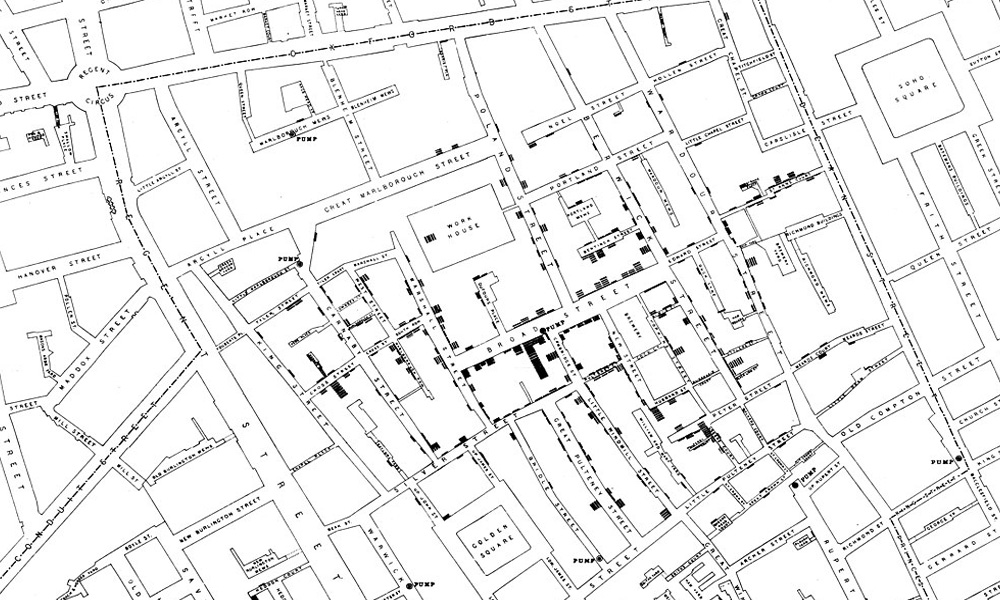Though early attempts to rationally explain disease can be traced as far back as Hippocrates around 400 B.C., the father of modern epidemiology is considered to be John Snow. It is the study of how and why diseases occur and proliferate. Therefore it is instrumental in predicting incidences and evaluating prevention strategies. An explanation of epidemiology can be found in the online journal BMJ.
During an outbreak of Cholera in London in 1854, John Snow undertook exploratory analysis of the disease. He mapped the locations of deaths from Cholera, marking the sites with coloured pins on a street plan. He discovered a cluster of locations in the St. James Parish in central London. With further observation and investigation, the daily activity of the local population could be traced to the water pump at Broad Street. Adjacent to the water source was a cesspool that was contaminated with Cholera.
The significance of these events is well documented along with the obvious benefits to medicine and health. Yet there is another aspect of interest, the underlying perpetual relationship between microbes and human populations. The unseen but ever-present connection between the two, traceable and directly relative to our behaviour and passage through our environment. When forensically scrutinised, representations can be drawn; illustrative depictions of behaviour or manifestations of this imperceptible realm.
John Snow’s analytical map of 1854 is shown here.


